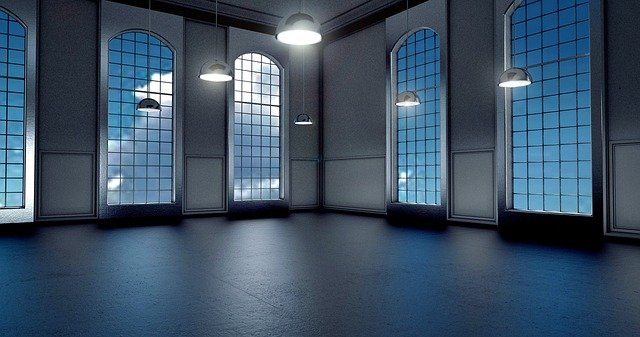The Pillars of Architectural Lighting
Architectural lighting and ingenious façade lighting can bring out dimensions and highlight details that add to your experience of the exteriors of buildings as well as to their interiors. Beautifully designed and professionally installed lighting sets the right accents. Aesthetically executed lighting solutions, balancing on the edge of science and art, emphasize the style of buildings and make them memorable.
Today it is no longer possible to imagine a modern metropolis without architectural lighting. Great architectural lighting produces an astonishing impact which can::
- Enhance the unique features of buildings and turn attention away from less interesting elements.
- Beautify a building and create better market value.
- Change the appearance of ordinary objects. In the dark, a professional approach to lighting can turn even typical buildings into real works of art.
- Emphasize the historical value of buildings. Lighting solutions for the illumination of buildings of historical value can help them blend into the modern world while maintaining attention on the authentic and original nature of the place.
- Reinvigorate a cityscape with temporary light shows and styles. Great lighting ideas can reinvent a place by giving the streets striking colors and layers of light that change the ordinary world into a wonderland. Unexpected festive lighting elements tend to be popular with residents, tourists, and guests of the city especially on days of sports and cultural events. Just think how your mood changes when driving through a neighborhood at Christmas when, thanks to the illumination, ordinary houses are transformed into art objects of amazing beauty.
- Create an attractive atmosphere to stimulate investment in business projects and trade.
- Increase the safety of people on the streets of the city in the evening and at night.
Lighting designers identify six key elements of architectural lighting. However, options for their combination are limited only by the imagination and skill of the designer himself. Several types of lighting are used to work with the exteriors of buildings.
Track lighting focuses on specific areas of the building or the elements in it. These can be columns, bas-reliefs, moldings, sculptures, window openings, or even artwork. To achieve the desired effect, track lights with LED lamps and a narrow beam are used, it helps to emit a dim diffused glow.
Background lighting adds highlights to a specific design element. It seems to snatch it out of the darkness, thereby drawing additional attention to the object. Today, lighting designers use metal spotlights to create this kind of lighting. However, due to energy-saving, these lamps are being replaced by LED lighting with great technological innovations that save materials and energy.
Contour lighting involves the highlighting of the contours of the structure or individual embellishments. It is possible to illuminate both vertical and horizontal elements of the facade. As a rule, LED strips and garlands are used for this.
Floodlighting provides uniform illumination of the facades of all buildings located on the square. It is also used to illuminate monuments and objects that commemorate a historical heritage or have artistic value. To minimize the glare effect of such lighting, lighting designers use lamps with reflectors or lamps with a shade on high poles.
Dynamic lighting enhances the urban atmosphere. It is created using programmable LED lights and displays various interactive scenarios on the facade, which are controlled from a mobile device or tablet.
Three “pillars” of architectural lighting
Lighting plays an important role in how city residents and visitors perceive architecture. It is the play of light that draws people’s attention to the shape, color, and style of buildings at night. It helps to look at familiar buildings with a fresh eye so that viewers can once again admire their beauty and grandeur.
Achieving a balance between lighting and architecture is the formula for creating. It includes three key aspects. Without exaggeration, they can be called “pillars”, thanks to which architectural lighting becomes an integral part of the project, and the building turns into an easily recognizable art object.
Aesthetics. This aspect encourages lighting designers to focus on the emotional impact of lighting on viewers. It is important to determine how people who visit the site will feel. Aesthetics are especially important when highlighting historical and cultural monuments. It cannot be disregarded in lighting solutions for commercial and corporate buildings, where outdoor lighting should attract visitors and make these objects recognizable.
Quality and comfort. Architectural lighting should look attractive. This is an axiom. However, as well as the fact that it has no right to be formal. After all, if the solution is chosen incorrectly, the project is developed with errors and is implemented inaccurately, the backlight will not be able to perform its main function – to provide high-quality lighting. Such light will either blind passers-by, creating some discomfort, or incorrectly placed light accents will not work on the image of the building.
Energy efficiency. It’s one thing to create a lasting wow effect for viewers, and quite another to develop an exciting project that will also be energy-efficient. Experienced lighting designers know what equipment to use and what is needed for most of the lights to reach their destination and to minimize wastage.
Lighting engineering can be called one of the fastest-growing industries. Thanks to the advent of light-emitting diodes, light technologies are making leaps and bounds: the capabilities of luminaires are growing, and the devices themselves are significantly reduced in size. The future holds even more bold solutions realizable with the help of compact lamps that integrate light into architecture as much as possible!

